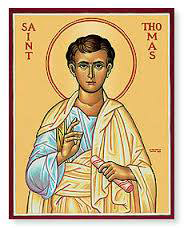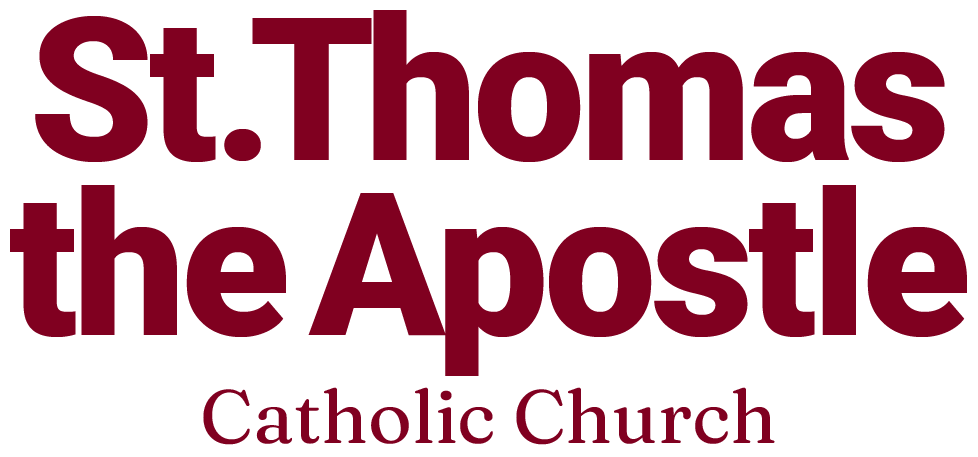Anointing of the Sick & Funerals
Anointing of the Sick
First Monday of the month after the 8a.m. Mass.
Emergency phone number for After Hours
Anointing Only Phone: 951-396-1247
"...and the prayer of faith will save the sick person, and the Lord will raise him up.
If he has committed any sins, he will be forgiven."
(James 5:15)
Anointing of the Sick is the sacrament that is received by those who are ill or suffering.
By the sacred anointing and the prayer of the priest, the whole Church commends those who are sick to Christ. The sick person receives the Holy Spirit’s gifts of strength, faith, peace, and courage, and his or her suffering is united with the suffering of Christ for the building up of the Church (Catechism of the Catholic Church [CCC], nos. 1520-23).
Through the Sacrament of Anointing of the Sick, the Church carries out Jesus’ mission of compassion and healing for the sick. The one who is ill can also be a minister to others. By uniting their suffering to Christ, those who are sick can be signs of faith and witnesses of Christ’s Resurrection to the entire community (Pope John Paul II, Christifideles Laici [The Vocation and the Mission of the Lay Faithful in the Church and in the World], no. 54). (Continue Reading)
Source: usccb.org
Funerals
Coordinator of Funerals – Valerie Doran:
(951) 689-1131 ext. 224
Contact Funerals coordinator
Basic explanation of “Order of Christian Funeral”
According the Roman Rite of the Order of Christian Funerals, it has been the practice of the Church, as a tender mother, not simply to commend the dead to God but also to raise high the hope of its children and to give witness to its own faith in the future resurrection of the baptized with Christ. In the face of death, the Church confidently proclaims that God has created each person for eternal life and that Jesus, the son of God, by his death and resurrection, has broken the chains of sin and death that bound humanity. Christ “achieved his task of redeeming humanity and giving perfect glory to God, principally by the paschal mystery of his blessed passion, resurrection from the dead and glorious ascension.” (Vatican Council II, Constitution on the Liturgy, art. 5).
Purpose of the vigil: This rite may be celebrated between the time of death and the funeral liturgy or, should there be no funeral liturgy, before the rite of committal. The time immediately following death is often one of bewilderment and may involve shock or heartrending grief for the family and close friends. The ministry of the Church at this time is one of gently accompanying the mourners in their initial adjustment to the fact of death and to the sorrow this entails. Through careful use of the rites, the minister helps the mourners to express their sorrow and to find strength and consolation through faith in Christ and his resurrection to eternal life. The members of the Christian community offer support to the mourners, especially by praying that the one they have lost may have eternal life.
Purpose of the funeral liturgy: At the funeral liturgy the community gathers with the family and friends of the deceased to give praise and thanks to God for Christ’s victory over sin and death, to commend the deceased to God’s tender mercy and compassion, and to seek strength in the proclamation of the paschal mystery. Through the Holy Spirit, the community is joined together in faith as one Body in Christ to reaffirm in sign and symbol, word and gesture that each believer through baptism shares in Christ’s death and resurrection and can look to the day when all the elect will be raised up and united in the kingdom of light and peace.
Purpose of the Rite of Committal: The rite of committal, the conclusion of the funeral rites, is the final act of the community of faith in caring for the body of its deceased member. It may be celebrated at the grave, tomb, or crematorium and may be used for burial at sea. Whenever possible, the rite of committal is to be celebrated at the site of committal, that is, beside the open grave or place of interment, rather than at a cemetery chapel. In committing the body to its resting place, the community expresses the hope that, with all those who have gone before marked with the sign of faith, the deceased awaits the glory of the resurrection. The rite of committal is an expression of the communion that exists between the church on earth and the church in heaven: the deceased passes with the farewell prayers of the community of believers into the welcoming company of those who need faith no longer but see God face to face.
Step 1: Confirmation from Mortuary and Family Member

The Funeral Coordinator will check Presider and church availability and then set up a meeting with the family
Step 2: Meeting & Funeral Policy Review

The goal of this meeting is the arrangement of the Rites of Christian Funeral which consist of Vigil, Mass and Burial.
Funeral Mass Policy Review During Meeting
- Flower Arrangements and placement
- Picture and picture collage display
- Guest book and handouts
- Pall and the placement
- After Presider blessing
- Guidance of Readings. The church will provide Lector volunteers for the readings and Prayers of the Faithful
- Guidance of Liturgical Songs for the Mass. The church has a Music ministry that will be provided. Special non liturgical song requests may be played as a prelude to the Mass
- Offertory presenters may be chosen by the family and are requested to arrive 30 minutes prior to Mass for instruction
- Eulogy, a eulogy may be done during Mass, at the direction of the Presider, if there was no Vigil
- Life and faith facts of your loved one request. Only for the use of the Presider
- Misc. questions and concern by family or Funeral Coordinator i.e. Estimate of how many in attendance, who will be making payment and when.
Readings

Old Testament Selections:
- 2 Maccabees 12: 43-46
- Wisdom 3: 1-9
- Wisdom 4: 7-15
- Isaiah 25: 6a, 7-9
- Lamentations 3: 17-26
New Testament Selections:
- Romans 5: 5-11
- Romans 6: 3-9
- Romans 14: 7-9, 10c-12
- 1 Corinthians 4: 14-5:1
- 1 Thessalonians 4: 13-18
Step 3: Follow Up

The Funeral Coordinator will follow up and prepare the funeral mass.
Day of Funeral

- Family arrives 30 minutes prior to Mass time
- Family gives Funeral Coordinator guest book and/or pictures to be placed, any payments to be made
- Instruct Offertory presenters, Lectors and/or Eulogist
- If family is processing in, give them instruction or show them their reserved seating.






